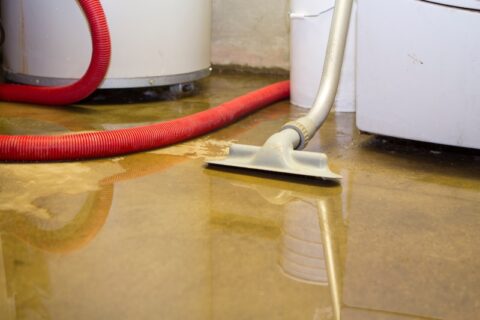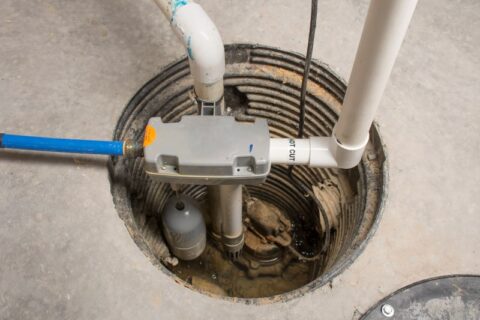What to Do When Your Sump Pump Overflows
Water in the basement is a homeowner’s worst nightmare. Sump pump installation is your first defense against this catastrophe, but what happens when the pump stops working and the pit overflows?
Steps to Take When Your Sump Pump Overflows
Keep structural damage and mold growth to a minimum with these tips:
- Confirm the power supply: The primary reason sump pumps fail is due to power outages. A battery backup provides peace of mind, but the sump pump could still overflow if a fuse blows or a circuit breaker trips. Check these areas to ensure the pump is receiving power.
- Reset the sump pump: If the unit is plugged in and the fuses and breakers are in good shape, try simply unplugging the sump pump and plugging it back in after a few seconds to reset the system.
- Restart the motor: Remove the sump pit lid and lift the float switch to restart the motor. If the sump pump remains unresponsive, it could have an underlying mechanical issue. You’ll likely need a professional sump pump repair to get the unit running again.
- Inspect the check valve: This valve is crucial because it prevents pumped-out water from flowing back into the sump pit. Debris blocking this valve or the pipe above it could affect functionality. Remove any obstructions to get your system running smoothly again.
- Double-check the float switch: A malfunctioning float switch won’t activate the sump pump. Ensure that it can move freely and is not hindered by debris in the sump pit. A quick cleaning can often restore functionality.
- Clear the weep hole: A small hole on the discharge pipe of most submersible sump pumps allows air to release and prevents the pump from locking up. If this hole is obstructed, push the blockage through with a thin, stiff wire.
- Inspect the impeller: Water filters through the impeller. A clog here may cause the pump to stop working and overflow. Checking and cleaning this filter may restore proper function.
- Snake the discharge line: Your sump pump is only as effective as its discharge line, which must remain free of leaves, debris, or ice to drain properly. Use a snake to clear blockages that could be causing the sump pump to overflow.
Preventing Future Overflows
Did you get your sump pump working again? That’s good news! Now, minimize the chance of future overflows with these tips:
- Maintain your sump pump regularly: Occasionally pour water into the pit to test that the pump comes on as expected.
- Install a backup power source: A battery backup or generator keeps your pump running even during power outages.
- Ensure proper sizing and installation from the get-go: You may need to replace your sump pump with one of a different size or style. Proper sump pump installation is essential for optimal performance.
Schedule Sump Pump Services
Dealing with an overflowing sump pump is stressful, but you don’t have to do it alone. Parley’s PPM Plumbing, Heating & Cooling can keep your sump pump up and running with quality sump pump repair and installation services. We’re a family-owned company dedicated to your satisfaction and peace of mind. To schedule a visit, dial 801-226-3033 if you live in Utah County, or call 801-229-2665 if you’re a Salt Lake County resident. You can also fill out our online contact form, and we’ll get back to you shortly.


